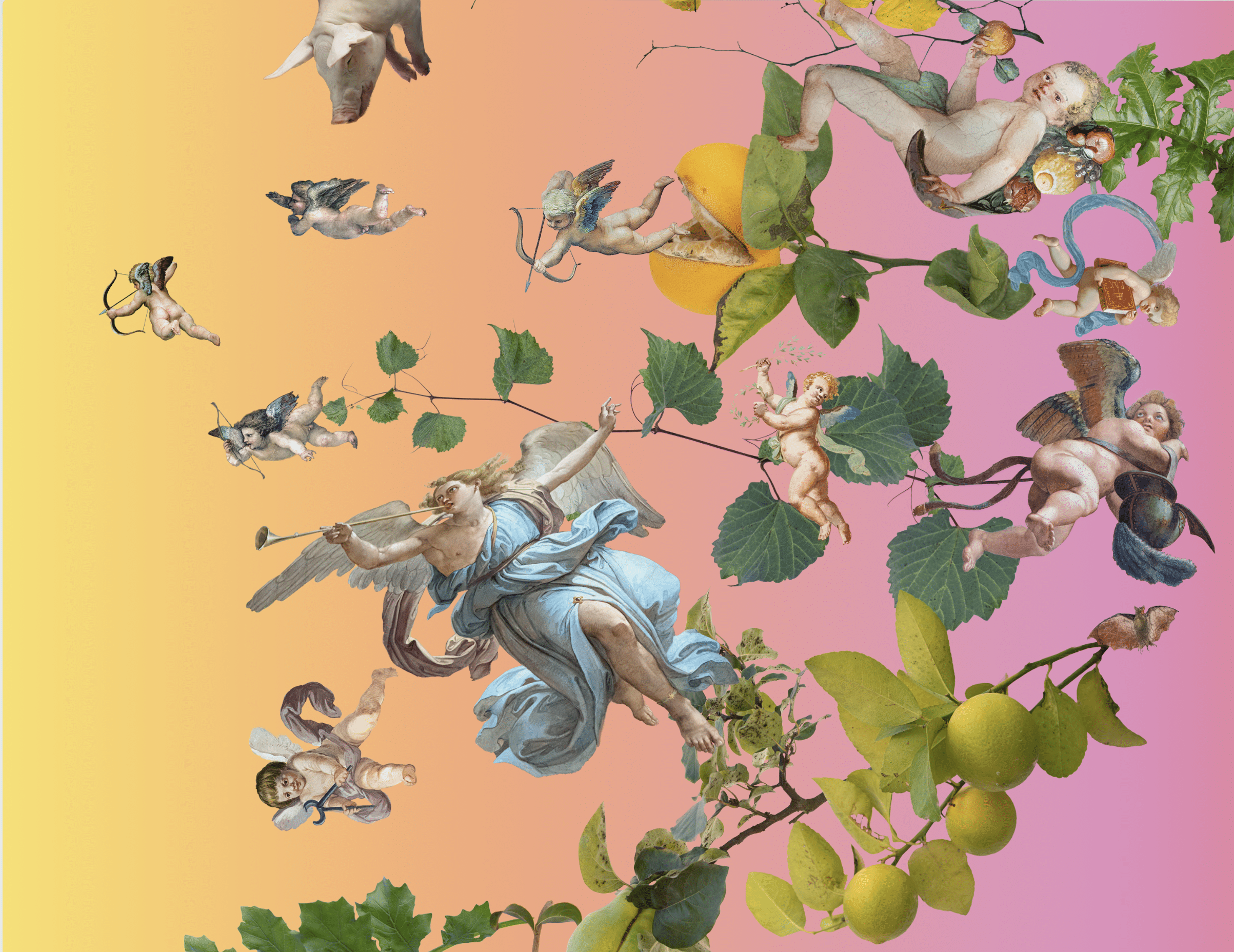Love Trap! Trappola d’Amore! Chiostro del Bramante
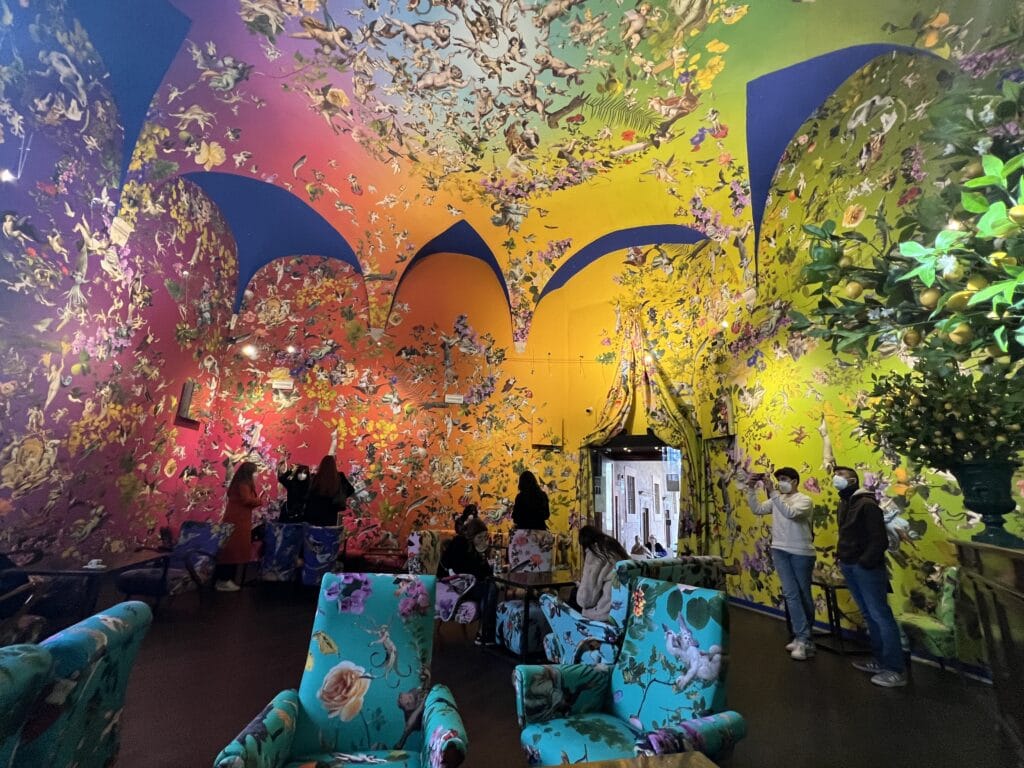
Crazy
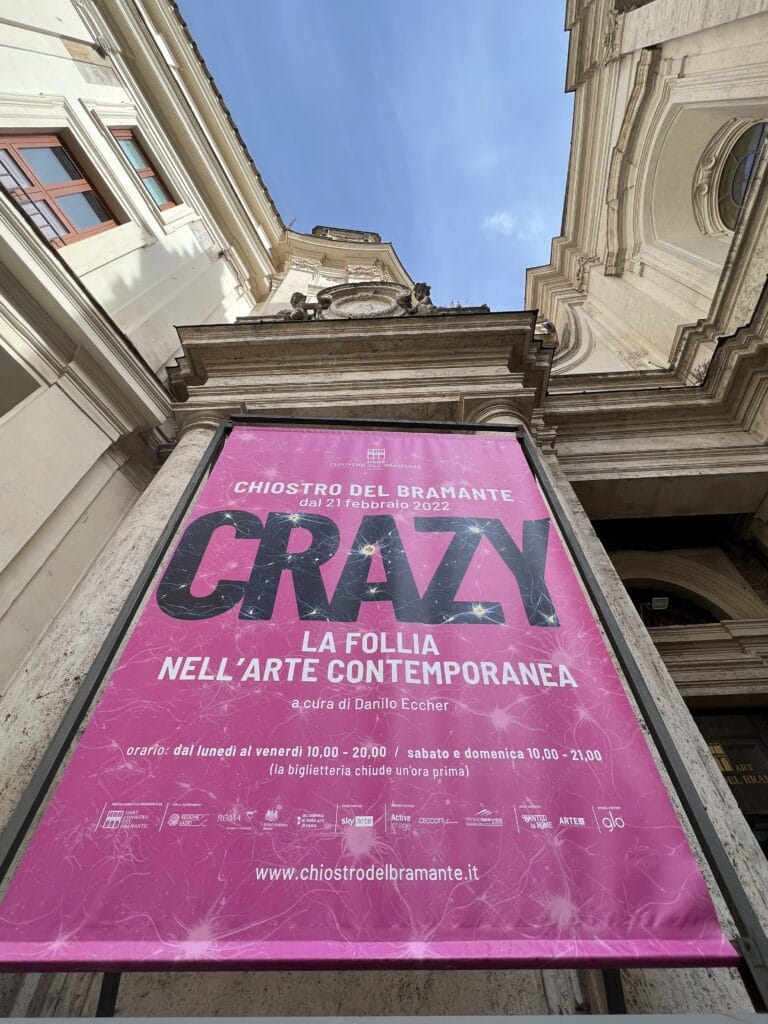
Trappola d’Amore / Love Trap, David Allen Burns and Austin Young / Fallen Fruit, custom asynchronous repeat pattern created by the artists and printed with archival watercolor on biodegradable cotton fabric installed onto the ceilings and walls and accessorized with complimenting refinished furniture for the historic ‘Sibille room’.
Commissioned by DART for the exhibition ‘CRAZY’, curated by Danilo Eccher, Chiostro del Bramante, Rome, Italy, 2022.
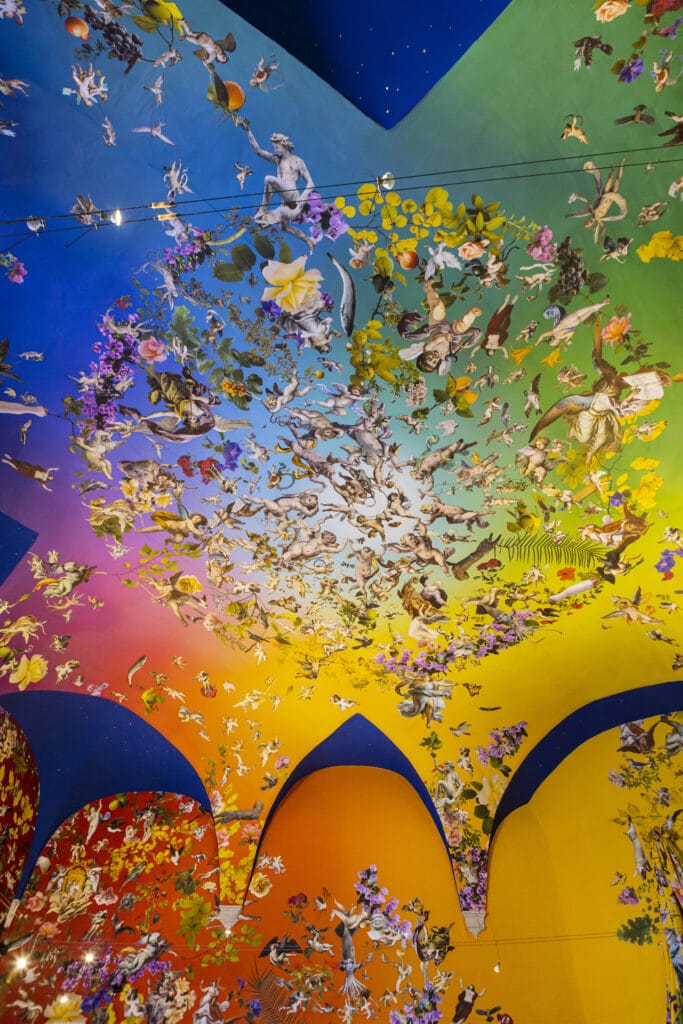
_________________________________________
Love is many things.
Love is a spectrum.
Love is a condition that is ever-changing.
Love is a truth.
Love is a trap.
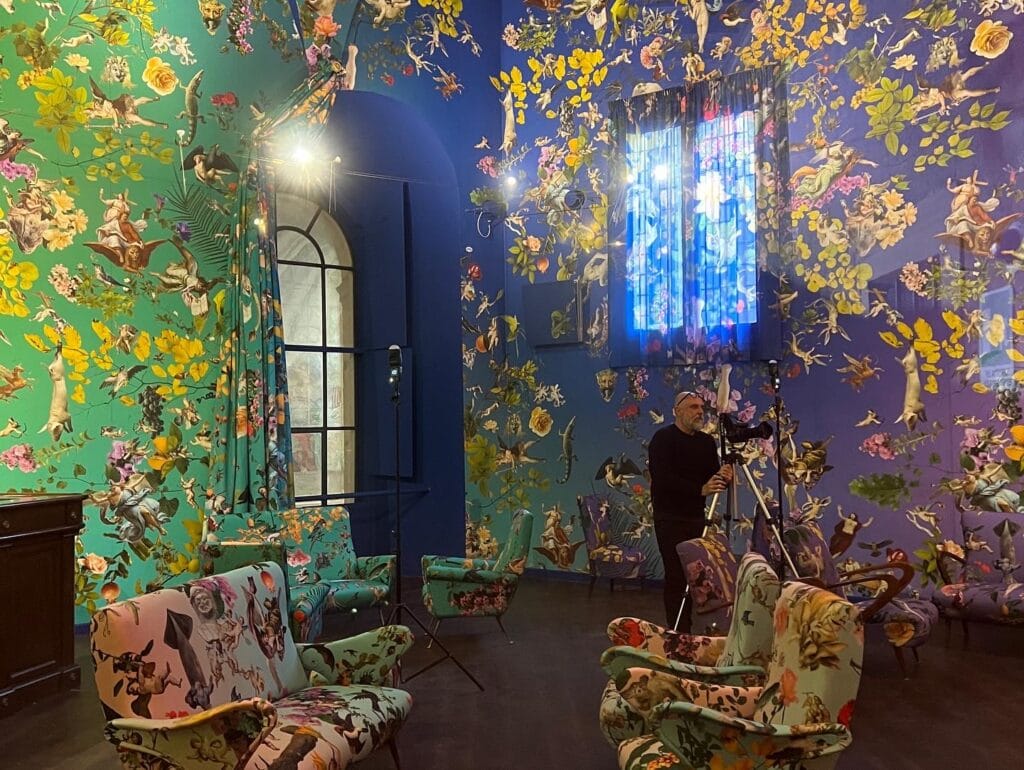
Like all of the colors of the world – love is universal, it is hard to describe and yet we all understand it without disagreement. LOVE IS: Like blue. And like red. Green and yellow. And bright orange and deep violet. All at the same time. We assign understanding without thinking about relationships in love and also we determine ideas of beauty and the sublime by using all of the colors of the world as its index. Universally, we agree about these nuanced meanings often without compromise or debate. And yet, there is function to the colors of the world. Functions that are more than about beauty. Beauty is a subjective interpretation that is continually evaluated in all places, in all emotional spaces, and in absolute real-time — simultaneously about every single thing in the entire world. The visual spectrum that represents all things of shape and form also distinguishes the differences of what is banal and what is extraordinary. And above all in exploring the meanings of our world. We all know that there are some conditions about human nature that can not be quite understood in one lifetime. The ideas that ‘love is everlasting’ and that ‘beauty is the truth’. And therefore, it’s complicated.
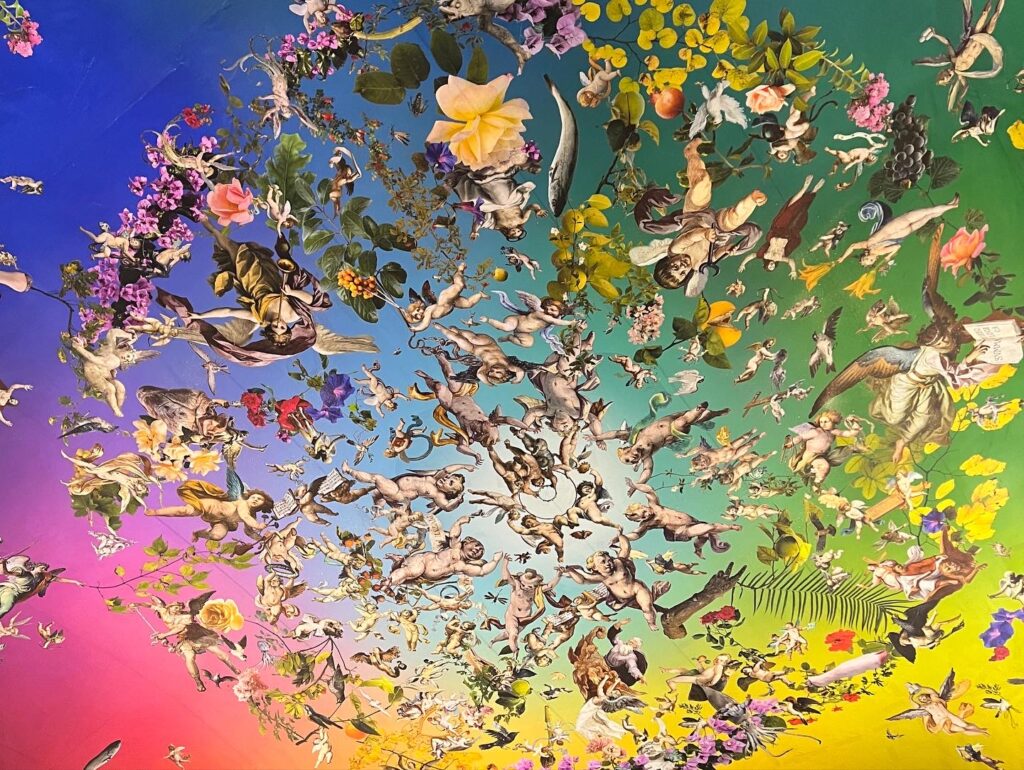
“Rome is amazing. Cracked our brains open, lit our souls on fire, and broke our hearts on the first day. Without trying. Damn.” That was the social media post that started the project. We walked 80 kilometers in one week. We explored every Cathedral we passed by. We listen to the sounds of the city at all times of day. We smelled the air. We asked questions. We took hundreds of photographs. We looked carefully for the things that repeat and we paid attention to things that stand out. We returned repeatedly to buildings, parks, piazzas, palazzos, historic villas, and small bistros, cafes, and bars. Over and over following the rhythms of the city. We discovered the energy that invisibility connects the public spaces and emulsifies historic ancient prescient symbolic intuitive transcendent meanings of time and space. These transparent songs of the city can be heard at all times of day and night. The follies of life are effervescent and free flowing like the eternal springs from fountains that haven’t stopped for a thousand years.
It would be madness to ignore the beauty around you. The grand beauty. The crazy beauty. The exquisite ecstasy of the moment. That is always present. Everywhere. Right now. Bellezza e Follia.
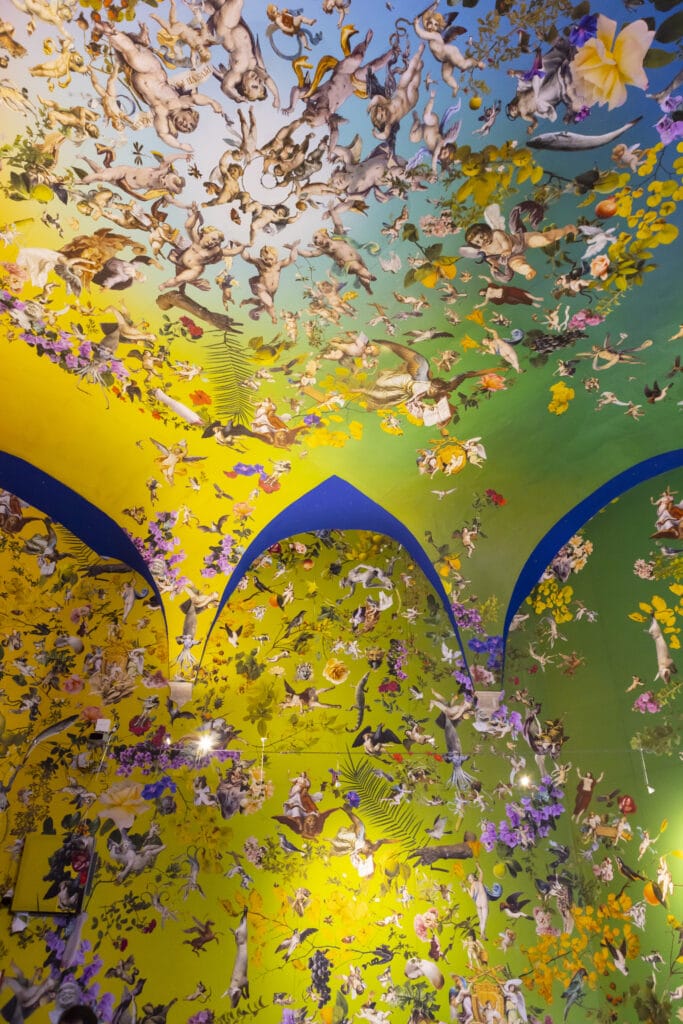
L’amore è tante cose.
L’amore è uno spettro.
L’amore è una condizione in continua evoluzione.
L’amore è una verità.
L’amore è una trappola.
Come tutti i colori del mondo, l’amore è universale. È difficile descriverlo eppure tutti lo capiamo senza divergenze. L’AMORE È: come il blu. E come il rosso. Il verde e il giallo. E l’arancione brillante e il viola intenso. È tutto, allo stesso tempo. Assegniamo significati senza pensare alle relazioni nell'amore e determiniamo anche idee di bellezza e del sublime usando tutti i colori del mondo come riferimento. Universalmente, concordiamo su queste sfumature di significato, spesso senza compromessi o discussioni. Eppure, tutti questi colori hanno uno scopo; uno che va ben oltre la bellezza. La bellezza è un’interpretazione soggettiva che viene apprezzata continuamente, in tutti i luoghi, in tutti gli spazi emotivi e in tempo reale assoluto, contemporaneamente in ogni singola cosa del mondo. Lo spettro visivo, che rappresenta tutto ciò che ha forma e sostanza, distingue anche le differenze tra ciò che è banale e ciò che è straordinario. E, soprattutto, esplora i significati del nostro mondo. Tutti noi sappiamo che esistono alcune condizioni della natura umana che non possono essere afferrate nella loro interezza, nemmeno nel corso di una vita intera. Idee come “l’amore è eterno”, o “la bellezza è la verità”. E, dunque… è complicato.
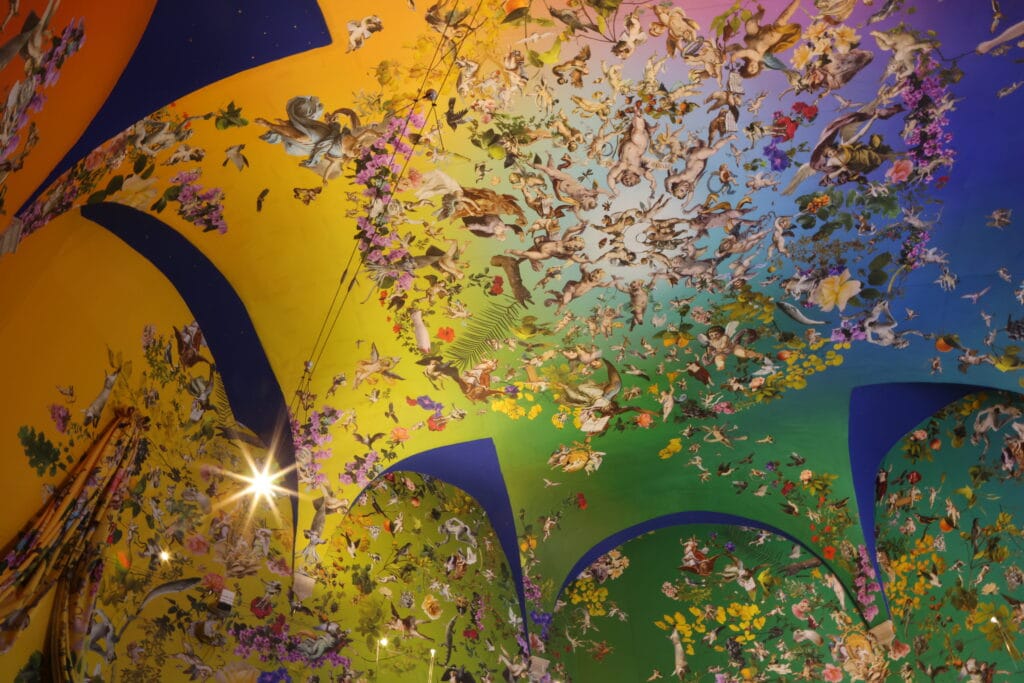
Fallen Fruit è una collaborazione artistica formatasi a Los Angeles nel 2004 tra David Burns,
Matias Vegener e Austin Young. Dal 2013 David e Austin continuano la loro carriera artistica
come duo. La loro arte ha come scopo quello di portare all’interno del museo opere inedite e
inaspettate utilizzando un medium altrettanto inconsueto: la carta da parati. Questa viene
personalizzata mediante la creazione di un pattern originale i cui elementi caratteristici
vengono di volta in volta desunti dalla realtà locale. La frutta è un vero e proprio leitmotiv
delle loro opere, sia per il significato storico ed iconografico universale che questa categoria
riveste, sia come metafora di un’identità condivisa. Una parte importante della loro ricerca
artistica, infatti, è connessa a un’idea di condivisione dello spazio e della conoscenza, che
ha portato gli artisti a proteste e alla proposta di utopici spazi condivisi. Nell’ambito della
mostra “Crazy. La follia nell’arte contemporanea” hanno invaso lo spazio relativo alla sala
delle Sibille invitando lo spettatore a entrare e a diventare protagonista di un mondo interiore
variopinto, divertente e folle.
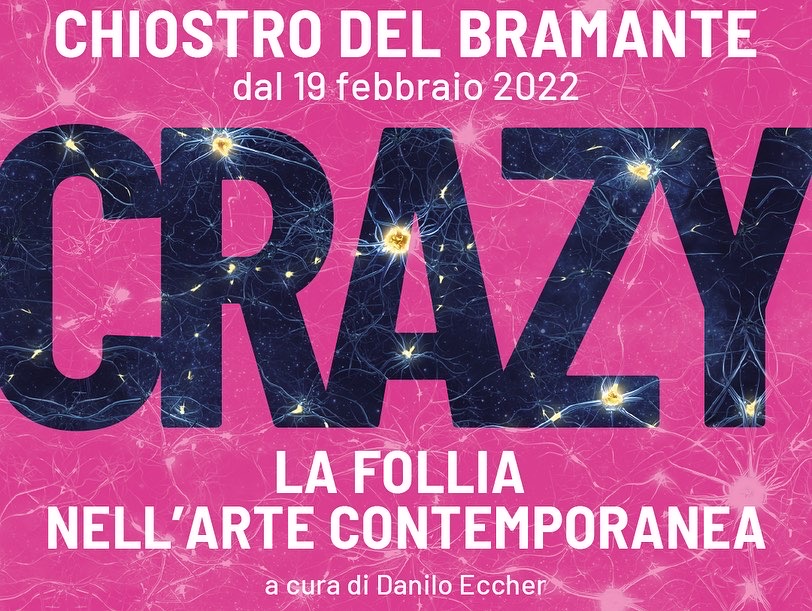
LA MOSTRA
Dart – Chiostro del Bramante
presenta
CRAZY
La follia nell’ arte contemporanea
19.02.2022 – 08.01.2023
a Roma un grande progetto creativo ed espositivo a cura di Danilo Eccher
21 artisti di rilievo internazionale, più di 11 installazioni site-specific inedite: per la prima volta le opere d’arte invaderanno gli spazi esterni e interni del Chiostro del Bramante di Roma, perché la follia non può avere limiti.
La percezione del mondo è il primo segnale di instabilità, il primo contatto fra realtà esterna e cervello, fra verità fisica e creatività poetica, fra leggi ottiche e disturbi neurologici.
I 21 artisti chiamati a partecipare sono parte di questa follia.
Carlos Amorales, Hrafnhildur Arnardóttir / Shoplifter, Massimo Bartolini, Gianni Colombo, Petah Coyne, Ian Davenport, Janet Echelman, Fallen Fruit / David Allen Burns e Austin Young, Lucio Fontana, Anne Hardy, Thomas Hirschhorn, Alfredo Jaar, Alfredo Pirri, Gianni Politi, Tobias Rehberger, Anri Sala, Yinka Shonibare, Sissi, Max Streicher, Pascale Marthine Tayou, Sun Yuan & Peng Yu.

